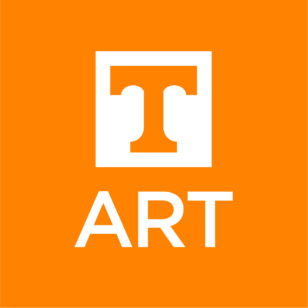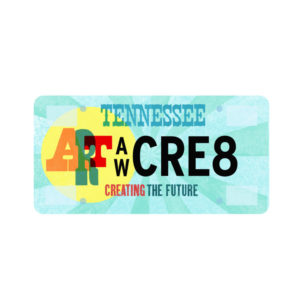INTERVIEW: MICHAEL DICKINS
JUN. 26, 2019
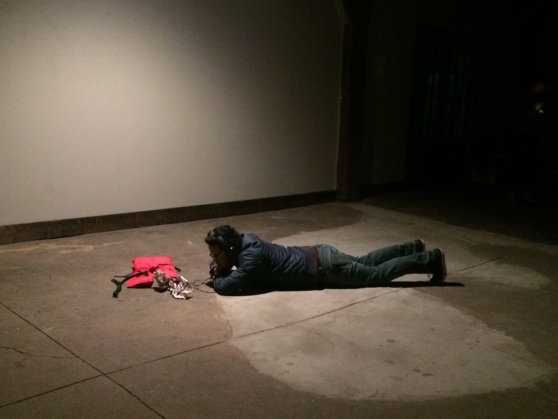
INTERVIEW: MICHAEL DICKINS
JUN. 26, 2019
Rachel Bubis: Many of your works deal with some pretty dark and disturbing themes. I’m still haunted by your lifejacket and sound piece, False Promise (2016), from the Asymmetric Kin exhibition, which references the true story of people selling fake lifejackets to Syrian refugees. The viewer must lie on the floor to listen to sounds of children playing in the water through headphones, which are connected to a lifejacket stuffed with newspaper. There’s also your #thoughtsandprayers sound-collage piece created from a collection of tweets that feature the words "thoughts", "prayers", or both - posted by politicians after a mass shooting occurrence in the United States and played from a the bottom of a steel drum. These are profoundly moving and deal with such important subjects.
Michael Dickins: First, thanks for taking an interest in my work. I often deal with subject matter that is not easily digestible, or marketable, so discussing it doesn’t happen on a regular basis. You’re correct, I do deal with some pretty dark and disturbing themes, but they always come from a place of care, concern, and questions, not from a place of fascination and shock.

Michael Dickins, #thoughtsandprayers, steel drum, audio collage (13:21 loop), 2017-present
RB: How do you manage personally with diving deep into such horrific stories and self-care. Does it affect you? Do you consider this when moving from one project to another?
MD: These are great questions – ones I get asked often – though I’m not sure if I’ve figured it out, yet. These pieces do affect me in many ways: as a father, a spouse, an artist, or as an empathetic human being. I’m always reading, listening and watching what’s going on around me, thinking about the next piece, and what bit of information moves me to act. I question a lot.
It’s probably why I have such a sporadic studio practice – I wouldn’t even call it a practice. I continuously work on a piece in my head way before it’s realized; I’m constantly thinking about it, pitching it to my wife, building it, critiquing it, and rebuilding it. When I finally settle on a form that feels right, I’m all in and it’s all-consuming – many late nights in the studio collecting, formatting, constructing – purging, if you will. It can be intense. It’s a terrible way to maintain a practice, but I’ve come to realize that’s how I work best. I have to fully finish a project before starting the next.
Once I’m done with a piece, it could be weeks or months before returning to the studio – maybe that’s the self-care part. Maybe it’s fear that a steady practice of creating these works will make me numb. I don’t know. I’m not sure if I’ve quite figured out how to manage or find a balance. I often question if it’s even important for me to find a balance. Maybe that’s what makes the pieces work. I’m fearful of becoming numb, fearful of not caring. But…by not making the work on a steady basis, maybe that’s me not caring enough? Again, I haven’t quite figured out the balance.
RB: I thought about this when I came across your Chime Curtain (2016) installation and honestly felt a bit relieved. The documentation of this piece is so therapeutic and soothing, with the sound of 85+ wind chimes and palm trees swaying in the wind. Did it feel the same for you to work on this piece?
MD: You know, I’m glad you asked about this piece – I really liked working on this piece. And yes, it was a pleasant reprieve from my frequent work habit and subject matter. This was my effort in dipping my toes into a practice that was mundane and repetitive as I built/assembled 115 wind chimes by hand. It was a practice of assembly-line production where I got to use my design and tech skills while not thinking so hard. It was extremely cathartic and gratifying, and the end result was the same.
I do have to mention Julie Dickover, the Director of the Crisp Ellert Art Museum at Flagler College, for commissioning the piece after some discussions for a new sound project/collaboration. 85+ of the chimes were installed at Flagler College’s famed “Palm Garden” in the heart of St. Augustine, Florida. It was a popular hangout spot for the students, and the tourists’ groups would join them in sitting the garden to experience the sound. It was close to the coast, so there was always a breeze, always sound. The piece was supposed to be up for 6 weeks, but it stayed up for an additional 6 months.
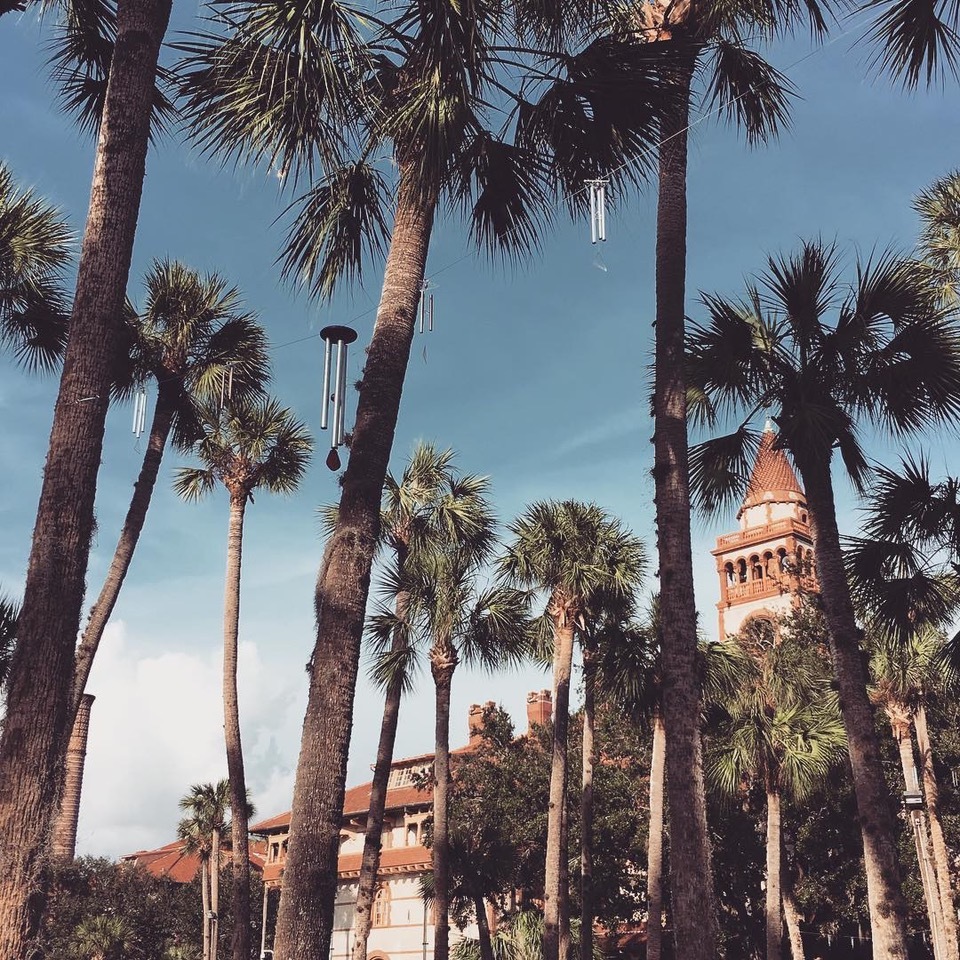
Michael Dickins, Chime Curtain (detail), Flagler College, 2016
RB: What did you do with all the wind chimes after the exhibition?
They’re in a large storage box in my studio. There’s a couple hanging in my backyard. I’ve always wanted to do a ‘chime-bombing’ somewhere in town – either on the tops of buildings downtown or in the trees throughout campus – installed at night so no one knows until the following day when all the chimes are activated. I just haven’t done it. Yet.
RB: Please do it!
You’ve worked on a couple of projects where you were randomly assigned to different collaborators: Asymmetric Kin, in which you worked with an artist from Istanbul, and Spill, a sound score created for {Re}Happening 2014 at Black Mountain College as part of their Chance Operations initiative. What was your biggest takeaway from these collaborations? Did anything surprise you or inspire you about the process?
MD: Those were both great experiences. The {Re}Happening experience really opened my eyes to the power of collaboration and experimentation. The idea that a group of strangers (four of us) from different locations, would be assigned to each other to create a piece for a specific site (randomly selected from a hat) on the hallowed grounds of Black Mountain College seemed pretty daunting. I was surprised that 1.) we pulled it off and 2.) we did it by combining our various backgrounds and art experiences to create a piece where we spoke as one voice and not as a collection of voices. That sounds a little cliché, but hey, I can be a softie. That piece holds a special place in my heart.
The Asymetric Kin collaboration was an interesting one as, for me, it turned out to not be collaborative – per se. I was paired with a Turkish artist that was creating work that was critical of the Turkish government. When we were first paired up, President Erdoğan had been in power for a year and was beginning his crackdown on dissidents. The artist I was paired with pulled out of the project out of unease of producing politically charged art with an American artist that was to be shown in Istanbul. Understandable. The artist was the one that informed me about the fake lifejackets that were being manufactured by a Turkish company and being sold to Syrian refugees – which became the basis for False Promise. I’m still in contact with the Turkish artist and he’s doing some incredible work.
My biggest take away from both projects, beyond the power of collaboration, is that artists have powerful voices that those in power don’t necessarily like to hear. Spill was a performance that was unapologetic in its rebuke of Duke Energy’s responsibility of contaminating the Dan River with coal ash. I use recordings of statements by Duke Energy’s CEO in the sound score. We found out later that the night of the performance at {Re}Happening, a couple of executives from Duke Energy were in the audience (it was, by the way, a fundraiser for the Black Mountain Museum), and they didn’t appear as they enjoyed us using their boss’s voice/statements against them. Nothing became of their displeasure, I’m just glad they heard it. That being said, that pales in comparison to the potential consequences that my colleague from Turkey could have faced.
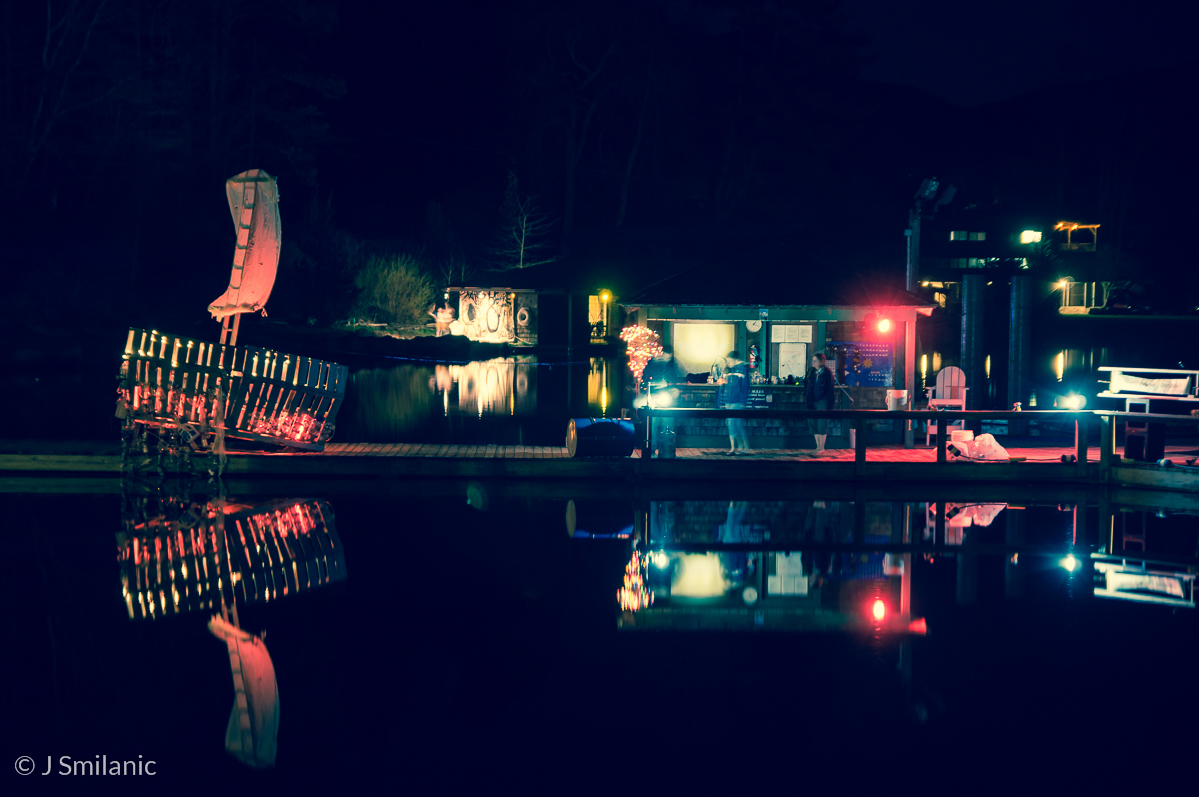
Michael Dickins, Spill, {Re}Happening, Black Mountain College, installation detail, 2014. photo credit: J. Smilanic
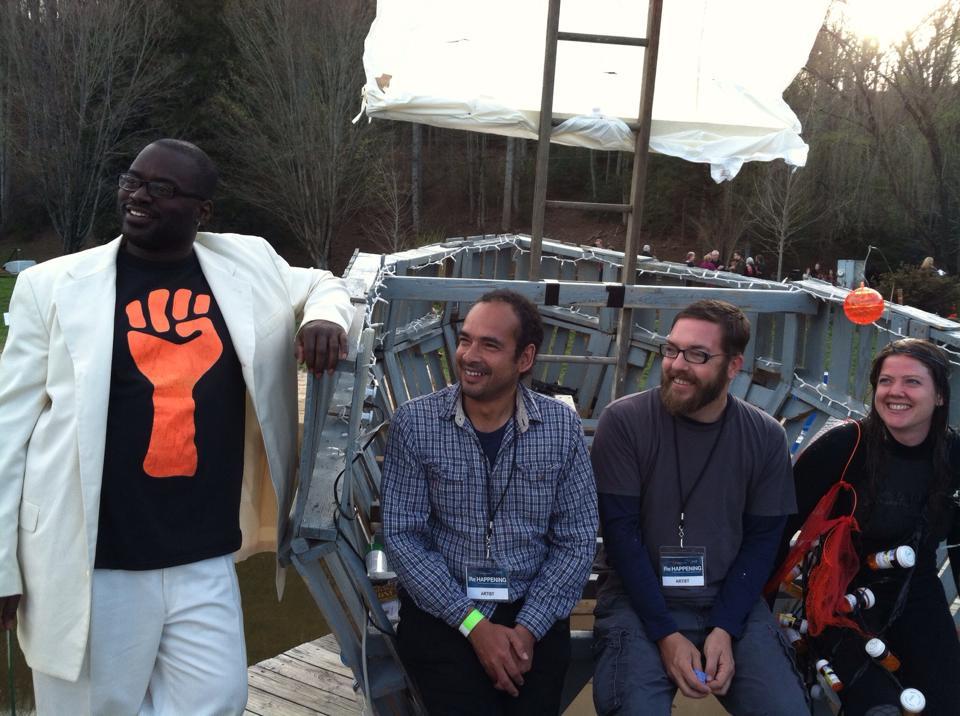
Spill (collaborators L-R: DeWayne ‘B-Love’ Barton, Victor Palomino, Michael Dickins, Eithne Laomainn), {Re}Happening, Black Mountain College, 2014
RB: You won “Best Activist Art” in 2018 in the Nashville Scene. Would you describe yourself as an “activist” or “activist artist”?
MD: No. Though I address political or social issues, I don’t do anything about them. I do present them as aesthetic commentary – a form of visual/aural poetry, but there is no active ‘doing’ on my part that I think constitutes an activist artist. I think of myself as more of an ‘observationist’ than an activist. I have huge respect for the artists that actively engage the public in artistic endeavors – I just don’t think I’m one of them. I think the ‘activist’ nod should go to The Browsing Room Gallery, its selection committee and the congregation of the Downtown Presbyterian Church for allowing me to exhibit the piece in their space. They’re the ones that took the active role within the community.
RB: Have you ever been surprised by someone’s response to your work?
MD: Hmmmm. Not really surprised, but I am interested. We all view art through our own filter of experiences, knowledge, personal histories, biases, etc., so I’m interested in how or why they respond the way they do. I thoroughly enjoy when people express their thoughts about the work and the conversations that follow. But there are a couple of instances that physically manifested the points I was interested in making with the works – which I was not expecting.
One was during the opening of Wailing Wall at The Browsing Room Gallery in Nashville. A group, a family with parents and college-age children, came in during the Art Crawl and went straight to the speakers to try to figure out what was happening. Their competing voices drowned out the sounds of the crying children coming from the speakers as they kept yelling, “ooh, I heard a sound”, or “this one’s not on”, or “ooh, me too”, as if they were playing a game – reiterating the point that if we could just briefly pause our own voices or our constant quest to be entertained, we may be able to hear the muffled voices of suffering children. They left and continued down to Broadway…solidifying the point.
The second was when #thoughtsandprayers was displayed at ArtFields in Lake City, SC. #thoughtsandprayers is a piece where recordings of tweets are projected from the bottom of a steel drum. The piece was displayed in the middle of the exhibition hall. When the work was returned to me, it had trash in the bottom of it. Paper, voting tickets, gum wrappers…chewed gum. The act of dismissing the tweets as garbage with actual garbage solidified that piece.

Michael Dickins, Wailing Wall, wood, Plexiglas, 24-channel audio collage, 2017
RB: What’s your process like? Do you do sketches? Do you work on multiple pieces at once?
MD: As mentioned before, I read a lot, think a lot, and build/ deconstruct/ rebuild pieces in my head way before they take physical form. Occasionally, I sketch out what the form of the piece may take, but my primary sketchbook is my wife, artist Dawn Martin Dickins. She plays a key role in my work, as she’s not only a trusted sounding board, but her feedback is crucial – better than any sketchbook I could possibly have in my studio.
I do work on multiple pieces at once – not physically, of course, but mentally. I have several that I’ve been working out for a while, and a couple new iterations of previously realized pieces.
RB: What are you working on now and what’s next?
MD: I’m working on an installation piece regarding the firebombing of more than 60 Japanese cities by the U.S. during WWII that targeted civilians and killed over 135,000 Japanese civilians.
I’ve also had a sound score piece that I’ve been mulling for a few years. I have the book to translate, just need the time to plot the score. It’s a book written in 1630 by an ancestor, Alexander Leighton, that criticized the Anglican Church, which led to his torture by King Charles I.
There is also a reiteration of #thoughtsandprayers that came to light a couple weeks ago that I’m working out. I’m receiving several crushed steel drums from our College of STEM. I’m thinking of tying the crushed barrels to the crushed dreams of the families of students killed by gun violence – into a field sound piece.
I have several more ideas, but they’re still in progress.
Thank you, so much, for inviting me for a chat.
Michael Dickins is an interdisciplinary artist and curator. He earned an MFA in Interdisciplinary Arts from Goddard College and a BFA from Georgia Southern University. His work has been exhibited throughout the Southeastern U.S. as well as Philadelphia, Pittsburgh, Denver, Houston, San Diego, Portland; Augusta, Maine, Istanbul and Berlin. He has twice been a featured artist at {Re}Happening at Black Mountain College, and has received commissions from the Pittsburgh Playhouse and the Houston Metropolitan Dance Company for original sound score and projection design. Dickins currently lives and works in Clarksville, Tennessee and is the Director of The New Gallery and University Collections at Austin Peay State University.
Rachel Bubis is based in Nashville, Tennessee and works as an independent arts writer as well as for Locate Arts.
* all images courtesy of the artist
